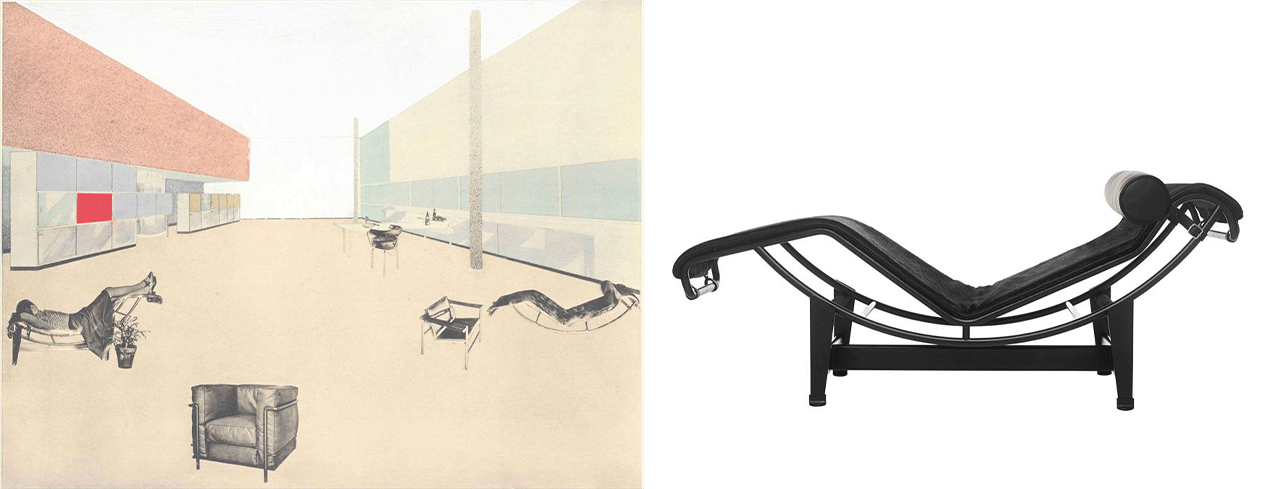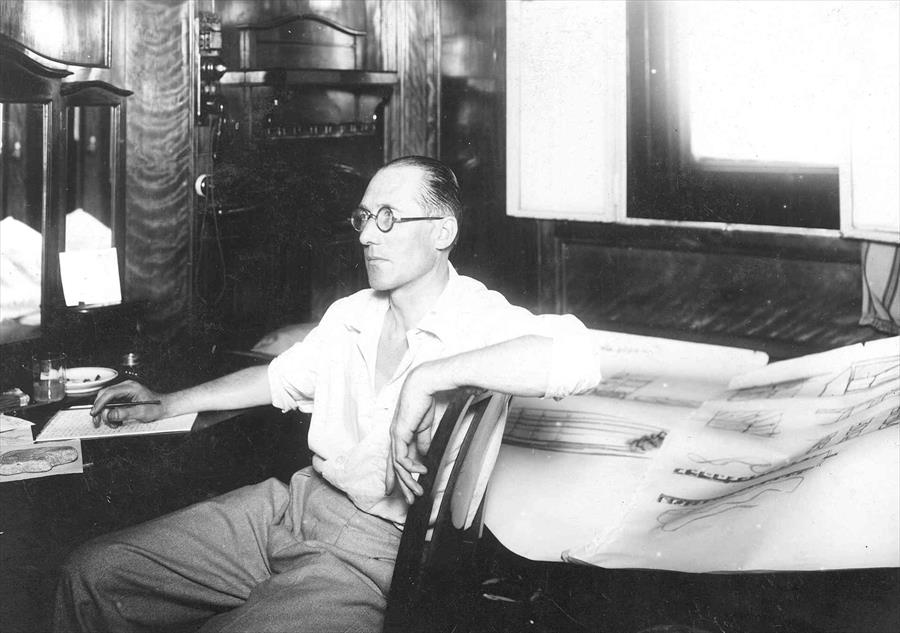Le Corbusier, whose real name was Charles-Édouard Jeanneret, was born in 1887 in La Chaux-de-Fonds, Switzerland, where he grew up in a family of artisans. He showed an early interest in painting and drawing and began exploring the ideas that would define his career at an early age. He studied at the École d’Art de La Chaux-de-Fonds and worked as a metal engraver and watchmaker, before continuing his studies in 1907 at the École Nationale Supérieure des Arts Décoratifs in Paris.
Architecture and painting
In Paris, he studied alongside architects such as Auguste Perret and Tony Garnier, while scrutinizing the work of other famous designers and architects, such as Walter Gropius and Ludwig Mies van der Rohe. He also began to explore the theories of modern architecture and to develop his own ideas about architecture. At the same time, painting became a major part of his life. He was influenced by many art movements, including Art Nouveau, Cubism and Fauvism. He paints full time and quickly achieves a reputation as an artist. Le Corbusier’s painting style was marked by the use of bright colors and simple geometric forms, reflecting his fascination with order and rationality. He painted urban scenes, portraits and landscapes, as well as abstract works. Le Corbusier’s work as a painter was highly regarded by art critics and he was exhibited in many galleries around the world. His paintings are now considered masterpieces of modern art.

Friendships and prolific collaborations
It was in 1920 that Charles-Édouard Jeanneret adopted the pseudonym Le Corbusier, in reference to a Swiss ancestor, Lecorbésier, who was a navigator. He wanted to mark a break with his past and symbolize a new direction in his professional life. This he did to found his own architectural firm. He worked on important projects and called upon many architects, designers and artists. His brother and cousin, Albert and Pierre Jeanneret, both architects, with whom he worked on many projects in France and India. Charlotte Perriand, a French designer with whom he created furniture projects, including his famous lounge chairs. Amédée Ozenfant, French painter and co-founder of the cubist movement, with whom Le Corbusier wrote the book “Après le cubisme”. And Jean Prouvé, a renowned French designer and builder. From this prolific collaboration came several architectural projects, but also metal furniture such as chairs and tables, furniture that became icons of modern design. His collaborations have led to the creation of many important projects and the expression of his vision for modern architecture.

Major projects and works
Le Corbusier designed many important projects during his career. Some of his best known projects include Unité d’habitation de Marseille, Chapelle Notre-Dame-du-Haut, Cité de Refuge, Villa Savoye and the National Museum of Western Art. Unité d’habitation de Marseille, designed in 1947, is a social housing complex in France that is considered an iconic example of modern architecture. Chapelle Notre-Dame-du-Haut, built in 1955 in Ronchamp, France, is a chapel that was designed to replace an earlier chapel destroyed during World War II. The Cité de Refuge, designed in 1933 in Paris, is a social housing complex that was designed to provide affordable housing for the disadvantaged. The Villa Savoye, designed in 1929 in Poissy, France, is a modern villa that is considered an iconic example of modern architecture. The National Museum of Western Art, designed in 1959 in Tokyo.

Writing
There are also books on architecture and design written by Le Corbusier. Among the most important is “Vers une architecture”, published in 1923, which is considered one of his major works and defined the principles of modern architecture. He also wrote “The Decorative Art of Today”, published in 1925, which examined the art movements of the time and defined the principles of modern design. “Urbanism,” published in 1922, examined issues related to urbanism and presented ideas on how to design modern cities.
Le Corbusier continued to work until the end of his life, although his most famous projects were completed in the 1920s and 1930s. In 1965, at the age of 87, he died of a heart attack while swimming in Roquebrune-Cap-Martin, France.

Despite his death, Le Corbusier’s influence on modern architecture and design has endured. His ideas on modern architecture, urbanism and design have been adopted by many architects and designers, and his work continues to be studied and admired today. He was nominated for the Nobel Prize in Architecture in 1963 and was included in Time Magazine’s list of the 100 most influential people of the 20th century in 1999.
Charles-Édouard Jeanneret, known as Le Corbusier, was a major Swiss architect and designer, considered one of the pioneers of modern architecture. His ideas on modern architecture, urbanism and design have continued to inspire subsequent generations, and his work remains a model for architects and designers worldwide.
